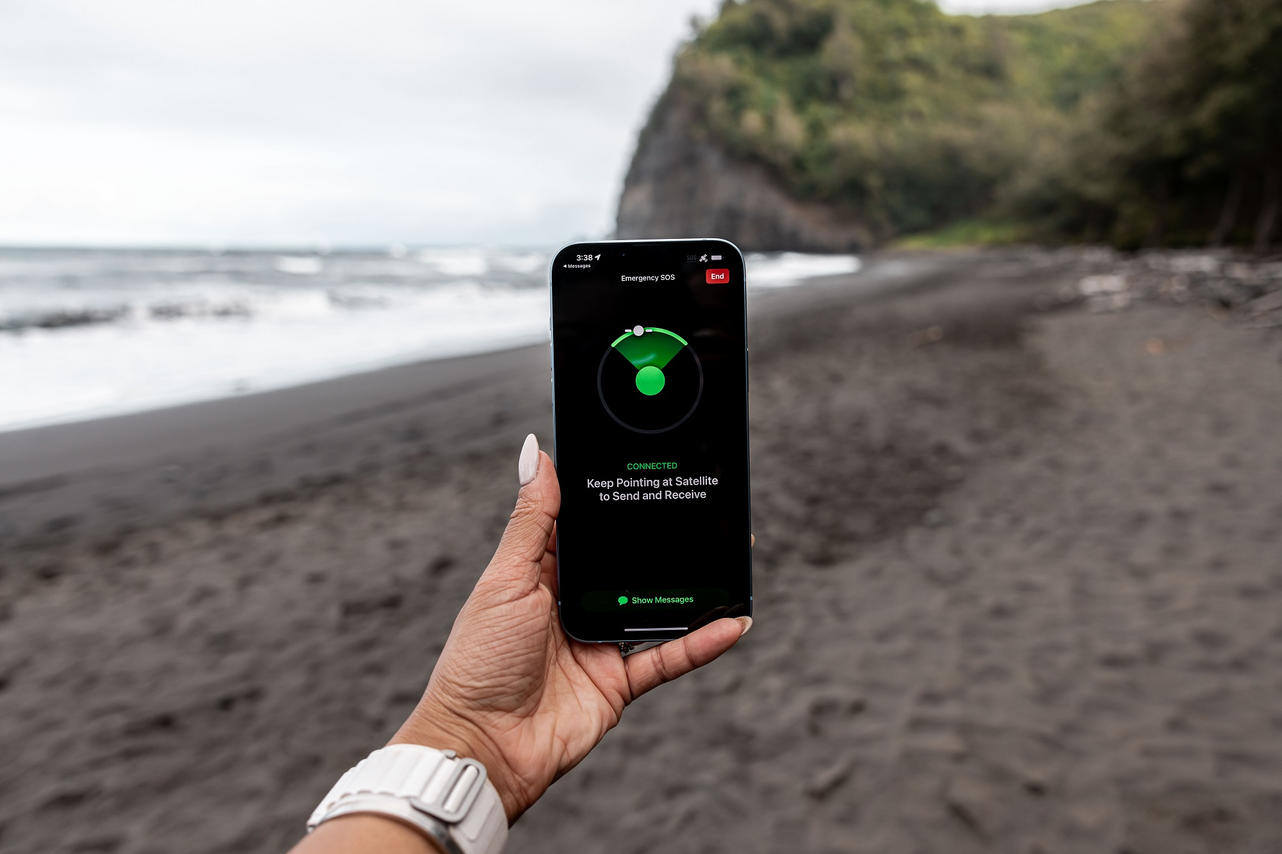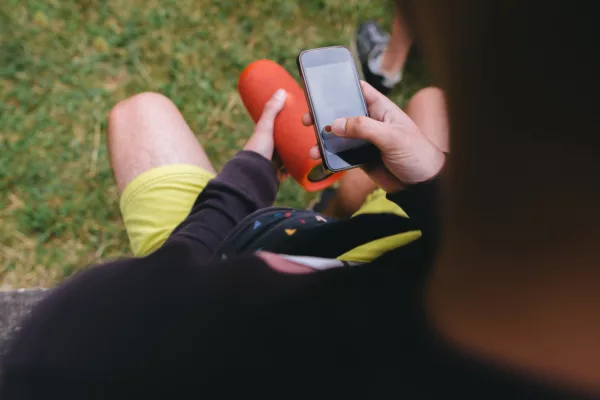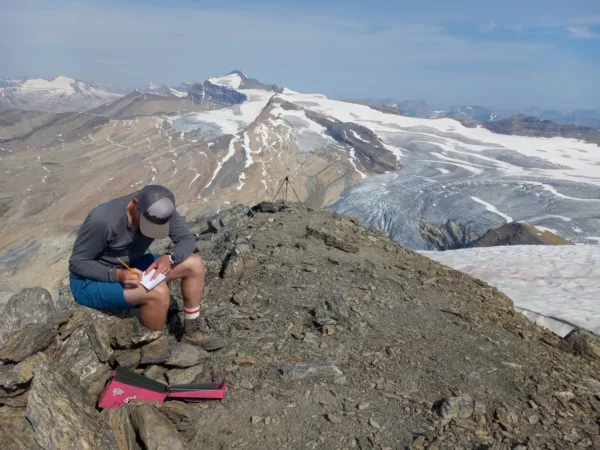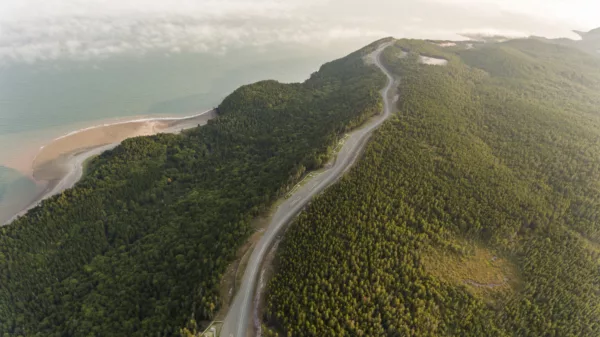Gear Review: Is the Apple Watch Ultra Worth It for Hikers?

We’re heading on a hike in the rugged Kohala Mountains that fringe the northern tip of Kona, Hawaii. The incline is steep—we descend 140 metres in just 0.9 kilometres—and my heart rate hovers around 135 BPM. I’m acutely aware the journey back up won’t be quite as forgiving. The trail brings us to the valley floor, a jet-black sand beach edged by a lush tropical forest and 150-metre-high cliffs. With the endless expanse of the Pacific Ocean ahead of us, it’s the perfect setting to put the new Apple Watch Ultra to the test.
 Credit: Alicia Haque
Credit: Alicia Haque
I flew to Hawaii to test out Apple’s newest addition to its smartwatch line up. I couldn’t wait to see whether it was worth the hype. As an avid Apple user and owner of the Apple Watch Series 3, my watch did what I needed it to do—tell the time, alert me of texts, log my workouts, track my heart rate and keep me connected. What more could I need?
Well, it turns out, a lot. And now, my Series 3 feels amateur in comparison.
Along with a team of gear testers, athletes, mountaineers and adventurers, I spent three days in a series of different environments, using the Ultra’s new features and pushing myself—and the watch—to the limit. I soon realized this isn’t just your standard smartwatch. The Apple Watch Ultra is made for adventure and built for the outdoors. Here’s why.
 Credit: Alicia Haque
Credit: Alicia Haque
This smartwatch is as much a digital tool as it is a safety device. It’s designed to help you push your boundaries and provide all the data you need, whether you’re hiking in BC’s backcountry, scuba diving in Newfoundland or embarking on a multi-day endurance expedition. It’s a practical tool that not only looks good, but that can actually help you in precarious situations.
On Low Power Mode, it offers up to 60 hours of battery life, which is essential for multi-day adventures and a major step up from Apple’s other watches. And for the adventures that aren’t as extreme, it’s nice not having to charge it every night.
 Credit: Apple
Credit: Apple
The Ultra uses dual-frequency GPS for extra precise location tracking. Apple redesigned the Compass to include Waypoints to mark places of interest (your car, tent, etc), as well as Backtrack which allows you to drop digital breadcrumbs as you hike. With the ability to retrace your steps using your Ultra’s GPS, this offers peace of mind in case you get lost while adventuring.
In addition, I tested out the new iPhone 14 Emergency SOS via satellite feature. The beach we hiked to didn’t have cellular signal, so we could properly test this feature. It’s truly a game-changer. Emergency SOS via satellite allows you connect with emergency services using your iPhone 14 and communicate via text with an emergency responder. You can share your Medical ID, emergency contact information and exact location.
 Credit: Alicia Haque
Credit: Alicia Haque
The Apple Watch Ultra also has Fall Detection and Crash Detection, designed to detect severe falls and car crashes and trigger Emergency SOS if you don’t respond. Another great addition is the Emergency Siren, activated by holding down the Action button. This sounds an 86-decibel siren to draw attention to your location, something that could alert first responders if you’re off-path. It’s also a valuable safety tool as a woman who frequently travels alone.
Aesthetically, the Ultra is sleek with its 49-millimetre aerospace-grade titanium case, which is corrosion-resistant and waterproof up to 100 metres. As someone with a small wrist, it is a statement piece, but I do like the larger design and the smooth edges. Three active bands are available, uniquely designed for alpine explorers, ocean adventurers and endurance athletes, but the standard 45-milimetre bands are also compatible with the Ultra for casual everyday wear.
 Credit: Alicia Haque
Credit: Alicia Haque
For scuba divers, Apple is making a splash in the underwater watch market and really changing the game. Designed with Huish Outdoors, the new Oceanic+ app for Apple Watch Ultra transforms your watch into a dive computer, with all the features you need for recreational diving to 40 metres. My husband and I are big divers, so the fact that the Ultra doubles up as a dive computer is very appealing.
 Credit: BangBangStudios
Credit: BangBangStudios
On the second day of our expedition, we hopped on a dive boat and headed to the South Kona Coast to test the watch underwater. After we were geared up, I commenced my dive tracker on the Oceanic+ App, made a big stride into the ocean and let the Ultra get to work. We dropped down to 22 metres to a beautiful reef with huge underwater rock formations and arches and a colourful array of fish and marine life. My Ultra tracked everything I needed: depth, water temperature, dive time and my full dive profile. It even buzzes when you get close to your no-deco time or when it’s time for a safety stop. The watch locks so you don’t have to fiddle with the touch screen while you’re under, and the larger Digital Crown is handy and can easily be used with cold fingers or dive gloves. The large and bright Retina display would be especially useful on a night dive, as it’s so easy and clear to read underwater.
 Credit: BangBangStudios
Credit: BangBangStudios
While the jury’s still out as to whether I’d rely on my Ultra as my sole dive computer (I did take my trusty Suunto with me, just in case), you can’t deny the value of the tech. I love being able to track and access the data from my dives. And the addition of the Action button with the Ultra gives you quick access to customizable functions, meaning you can quick start a marathon, a dive or a workout with one simple push.
 Credit: BangBangStudios
Credit: BangBangStudios
I’d say the only drawback of this very impressive piece of tech is the price: the Ultra Watch starts at $1,099, making it double the cost of the Series 8. But given the amount of tech and capability that’s condensed into this 49-milimetre package, if you’re going to make the most of its features, it’s well worth the investment.
So that begs the question—who benefits most from the Ultra, and is it worth it for hikers? I think hikers win on this one. The rugged design, 60-hour battery life, Waypoint and Backtrack and Emergency Siren are all features that are not only helpful but can save a life if things go wrong.
 Credit: BangBangStudios
Credit: BangBangStudios
As someone who is regularly outside of cell service, whether we’re hiking on Vancouver Island or road tripping in the Rockies, the Emergency SOS feature is game-changing, and I’d recommend the iPhone 14 solely for this feature. We don’t go into the backcountry enough to justify a Satellite phone, but we are in enough remote situations which could easily turn south, so this is a huge plus.
 Credit: Alicia Haque
Credit: Alicia Haque
Kona was an incredible place to test the Ultra with enough realistic scenarios to properly put the watch through its paces. Our final activity was a challenging and very mucky coastal trail run with a series of interval runs and sprints. Apple pushed the boat out for runners with features like dual-frequency GPS for better accuracy in built-up areas and the ability to create custom and multi-sport workouts, which can autodetect when to switch between workouts—something especially useful for triathlons or activity sequences on the clock. Precision start is handy as you can skip the classic “3, 2, 1” countdown and the Heart Rate Zones measure how hard you’re working, which is great motivation to push yourself that bit more.
I’ve been very impressed with the Ultra’s capabilities, aesthetic and synchronicity. It’s packed with powerful features that are well suited for adventurers as well as everyday wear. Apple created a brilliant piece of tech that accompanies hikers, divers, runners and outdoor enthusiasts in pushing the boundaries, while using tech to offer a layer of safety we never realized we needed.
 Credit: Alicia Haque
Credit: Alicia Haque
Disclaimer: The author was hosted by Apple and provided tech to test.














